Many visitors to Paleochora, passing through Chania, will have been pleasantly surprised, or even astounded, by the modernisation and refurbishment of the bus station there. Granted, the chaos at departure times still exists, but the waiting areas, cafeteria and toilets are now of a very high standard, so if you do miss your bus you’ll have a comfortable and relaxing time waiting for the next one. Also available is a leaflet describing locations accessible by bus services, including the Samaria Gorge, Paleochora, Falassarna … and Sougia, from where, it reads : “the ancient city of Lissos can be visited after a few minutes’ walk.”
Well, not quite! More accurately, the walk over to Lissos, although less than three km from the little harbour west of Sougia, will take up to an hour and a half.
Go in the coolness of autumn, when several hours can be spent exploring before a refreshing swim in the still warm waters of the Libyan Sea at Lissos beach. Then, if time allows and you’re energetic, continue along the E4 path to Paleochora, return by the same route, or ‘phone for Captain George’s water-taxi to take you on an exhilarating five-minute ride back to Sougia.
Although only a short distance, this walk requires good footwear, and some may find the terrain over rough and rocky ground, especially on the descent to Lissos by the old ‘kalderimi’ or mule trail, quite exacting. Take your time, plus sufficient water (refill at the spring in Lissos), and “look well to each step,” as the old adage advises.
Start behind the harbour, some ten minutes’ stroll west of Sougia village, entering a small gorge, with the route signposted, cairned, and indicated with black/yellow E4 waymarking. Follow the path through oleanders and pine trees to reach a huge cliff which overhangs forperhaps ten metres above you. Just five minutes beyond here, look carefully for, and take the path which turns sharp left, climbing out of the gorge in zig-zags, then more directly through pine trees to reach a plateau. Cross this to a magnificent viewpoint overlooking Lissos, with the small beach far below, and across the valley to the rock tombs on the far hillside.
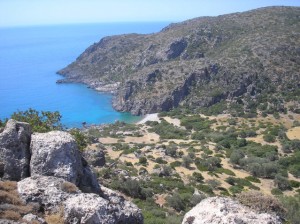
The view down to Lissos
Now the path descends steeply to reach the archeological site, on the right as you approach the valley.
Here are the remains of the Temple of Asklipios, 3rd century BC, with its mosaic floor. Incredibly, the first excavations at Lissos were not until 1957, when the temple was discovered. Many of the finds are now exhibited in the Archeological Museum in Chania, but it’s a fascinating place to wander around, with the remains of columns, capitals and a small theatre, all dating back to Greek/Roman times.
It seems that the city-state of Lissos became important as a healing centre, with medicinal springs, from around the 3rd century BC, and flourished until the Saracen invasion in the 9th century AD, when it was abandoned. Recently installed information boards give further details and a full history of the site. Below the Asklipion, close to the shepherd’s hut, is a spring of cold water, which often tastes ‘earthy’ but seems pure enough.
The beach is a short distance away (beware of oil and tar here), with the 13th century church of Ag. Panagia, re-built from older materials, close by.
A pleasant couple of hours can be spent exploring, finding threshing circles, ancient terracing, and visiting the remains of the barrel-vaulted roofed tombs of the necropolis, looted long ago. The onward path to Paleochora begins from the shepherd’s hut, now signposted, and will take approx. 4 hours.
The water taxi back to Sougia is operated by ‘Captain George’, and with no regular schedule, the arrangement is to ‘phone him on (0030) 28230 51133 or mobile 6947605082 and he will come and collect you. Be aware though, that ‘phone signal in Lissos is sometimes unreliable, and unless you’ve arranged a ride back in advance, be prepared to return to Sougia by the same way.

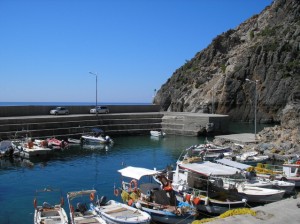
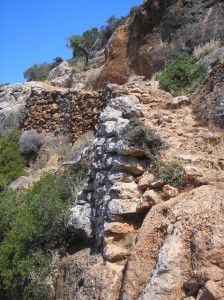

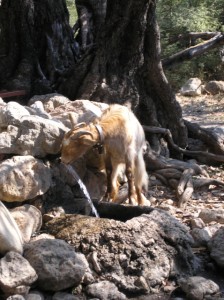
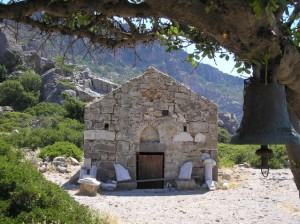
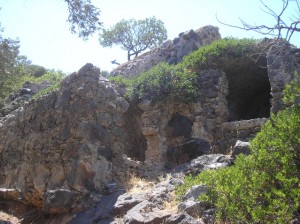

1 comments
Great walk , this one!